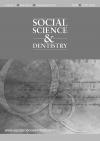Social Science and Dentistry

- Cover Date:
- December 2010
- Print ISSN:
- 2040-4263
- Vol:
- 1
- Issue:
- 2
Editorial
The British Dental association published an inequalities policy in 2009 aimed at tackling the ‘unacceptable and growing chasm in the uK between those with good and poor oral health’ (bDa, 2009:p2). the Steel report in 2009 highlighted the right of patients to equity and equality within the health services and in 2010 the marmot report provided clear evidence of ongoing significant and widening health inequalities which result from wider social inequalities. at this time of intense focus on health inequalities, it is incumbent on us to provide a critical analysis of current global trends in oral health and oral healthcare provision with a focus on the role of dentistry in reducing inequalities and the bigger picture with regards to the relationship between social inequality (brought about by the unequal and unfair distribution of power and wealth) and inequality. Social and behavioural scientists working in the field of oral health are already undertaking challenging and exciting work exploring oral health inequalities and have been doing so for some years. the link has been made between poverty and poor oral health, incorporating higher levels of oral disease, reduced access to and use of dental services, increased incidence of behaviours detrimental to oral health and lack of uptake of public health programmes. in addition challenging work has looked at the relative importance of poverty and discrimination when exploring the impact of ethnicity, gender or ageing on oral health. What is often missing from this body of work is a critical analysis of the link between oral health inequalities and wider social inequalities. there is little doubt that public health initiatives, access programmes and local interventions improve oral health but it is questionable whether they tackle the underlying cause of health inequalities and the link to wider social inequalities. Health inequalities bear some relation to the ways in which we provide healthcare but the health of the population is largely about social inequality. it seems an unlikely coincidence that increasing inequalities and social inequalities come at a time when increasingly globalised class interests have come to exercise greater influence over the governments of nation states. Governments cannot afford to ignore powerful transnational business and the result is the expansion of a very small, extremely wealthy power elite, insidious undermining of universal healthcare provision, widening gaps between the rich and the poor and widening health inequalities both within and between countries. macro level analysis of these issues and the relationship between social inequality and oral health inequality are essential and social and behavioural scientists are perfectly placed to undertake this kind of work. BDA. 2009 Oral Health Inequalities Report.
- Article Price
- £15.00
- Institution Article Price
- £
- Page Start
- 56
- Page End
- 56
- Authors
- Sasha Scambler, Tim Newton
Articles from this issue
- Title
- Pg. Start
- Pg. End
- Journey to the dental office: a study of dental illness behaviour exhibited by people visiting government and private dental services in Delhi, India
- 69
- 76
- Exploring the concerns and needs of patients with terminal head and neck cancer and their caregivers
- 88
- 96
- Mothers’ understanding of dental-caries related feeding practices and children’s use of dental care in Ajman
- 97
- 107
- Anxiety reduction via brief intervention in dentally anxious patients: a randomised controlled trial
- 108
- 117
